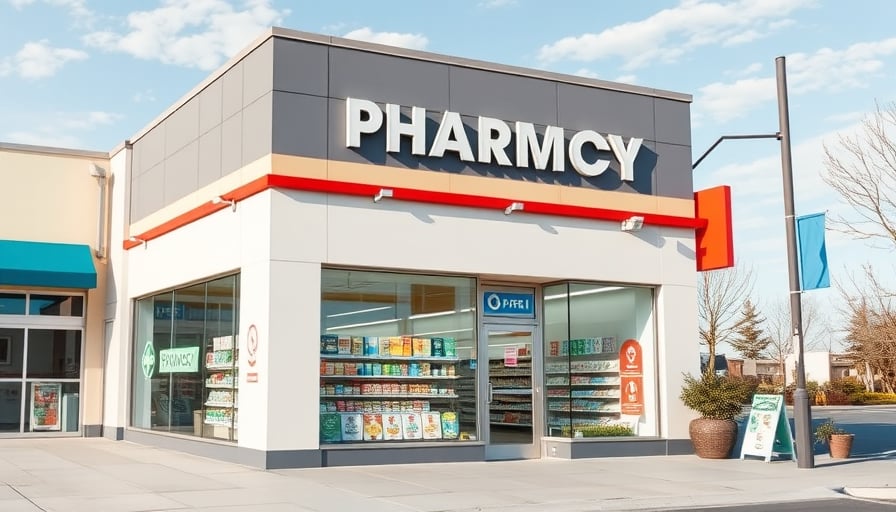CVS Health Corp.: A Multifaceted Portrait of Resilience and Risk
CVS Health’s latest quarterly report demonstrates a company that continues to generate robust revenue streams while grappling with external pressures that threaten its public image. The firm’s 2025‑Q3 earnings, released on November 17, 2025, surpassed market expectations, prompting a bullish reassessment from analysts and a surge in stock price activity. Yet the same day, a tragic shooting at a Loganville, Georgia, store—where a long‑time employee was killed—loomed as a stark reminder that the retail arm of the company remains vulnerable to societal volatility.
1. Earnings Strength Amidst an Uncertain Landscape
- Record‑High Revenue: The company posted a 12‑month revenue of $24.3 billion, a 19% increase from the same period in 2024. This growth was driven primarily by the Pharmacy Benefits Manager (PBM) segment, which continues to secure lucrative contracts with health insurers.
- Profitability: Net income surged to $3.8 billion, a 28% YoY rise, reflecting disciplined cost management and margin expansion in specialty pharmacy services.
- Analyst Reactions: TD Cowen lifted its price target to $85.00 from $78.00, citing the company’s ability to capture additional market share in the PBM space. The adjustment underscores confidence that CVS’s “cannibalization” of in‑store sales will be offset by higher PBM fees.
The company’s price‑earnings ratio—currently at 211.35—remains alarmingly high, signaling that investors are paying a premium for future growth. While the earnings beat justifies a temporary rally, the lofty valuation demands that CVS deliver sustained, margin‑positive performance to avoid a corrective pullback.
2. Insider Confidence and Market Dynamics
- CFO Share Purchase: On November 17, 2025, CVS’s Chief Financial Officer executed an on‑market purchase of 870 shares. While modest relative to the company’s market cap of $98.8 billion, the move is interpreted by some analysts as a signal that senior management believes the stock is undervalued or poised for a breakout.
- Political Interference: President Donald Trump’s recent bond purchases—totaling $82 million since August—have included allocations that intersect with the health‑care sector. Although the bonds are not directly tied to CVS, the administration’s favorable stance on health‑care regulation could indirectly benefit the company’s PBM contracts. However, the political environment remains volatile, and any shift in policy could undermine the stability that CVS’s investors count on.
3. The Human Cost: Loganville Shooting and Public Perception
The shooting incident at the Loganville CVS—where Kimberly Whaley, a 62‑year‑old employee, was fatally shot—has sparked a wave of media coverage from Atlanta News First and Fox 5 Atlanta. The tragic event occurred in broad daylight, with the perpetrator allegedly shooting Whaley in the parking lot before police intervened. The incident raises several concerns:
- Safety of Retail Pharmacies: As a high‑traffic, open‑plan retail environment, CVS stores are inherently exposed to external threats. The incident underscores the need for enhanced security protocols, especially in regions with rising gun violence.
- Reputational Risk: Public perception of CVS as a safe, community‑focused establishment may suffer. This could impact foot traffic, customer loyalty, and ultimately, in‑store sales—a segment already under pressure from e‑commerce growth.
- Policy Implications: The incident may prompt lawmakers to scrutinize retail safety regulations, potentially resulting in new compliance costs for CVS and its franchise partners.
4. Market Context and Forward Outlook
- Macro‑Economic Trends: Citi’s recent “Market Factors” briefing highlights the importance of “Timely GARP ideas” for 2026. CVS’s high PE ratio suggests that investors will need to monitor earnings growth closely to determine whether the stock offers genuine value or simply a speculative play.
- Competitive Landscape: The health‑care sector is witnessing increased competition from both traditional PBMs and tech‑driven entrants. CVS’s ability to differentiate its services—particularly through integrated health‑care offerings and digital platforms—will be critical to maintaining its market position.
- Regulatory Environment: Ongoing debates around drug pricing and PBM transparency could result in stricter oversight, potentially eroding margin gains. CVS must proactively engage with policymakers to safeguard its revenue streams.
5. Conclusion
CVS Health Corp. stands at a crossroads. On one side lies a firm that has proven its capacity to generate record revenue and profit, buoyed by a diversified service portfolio and strong executive confidence. On the other lies an organization exposed to significant external risks—political, security, and regulatory—that could undermine its long‑term valuation.
For investors, the decision to purchase or hold CVS stock hinges on the balance between short‑term earnings optimism and the potential for long‑term volatility. The company’s future performance will depend on its ability to navigate a complex web of market forces while maintaining the trust of both consumers and policymakers.




